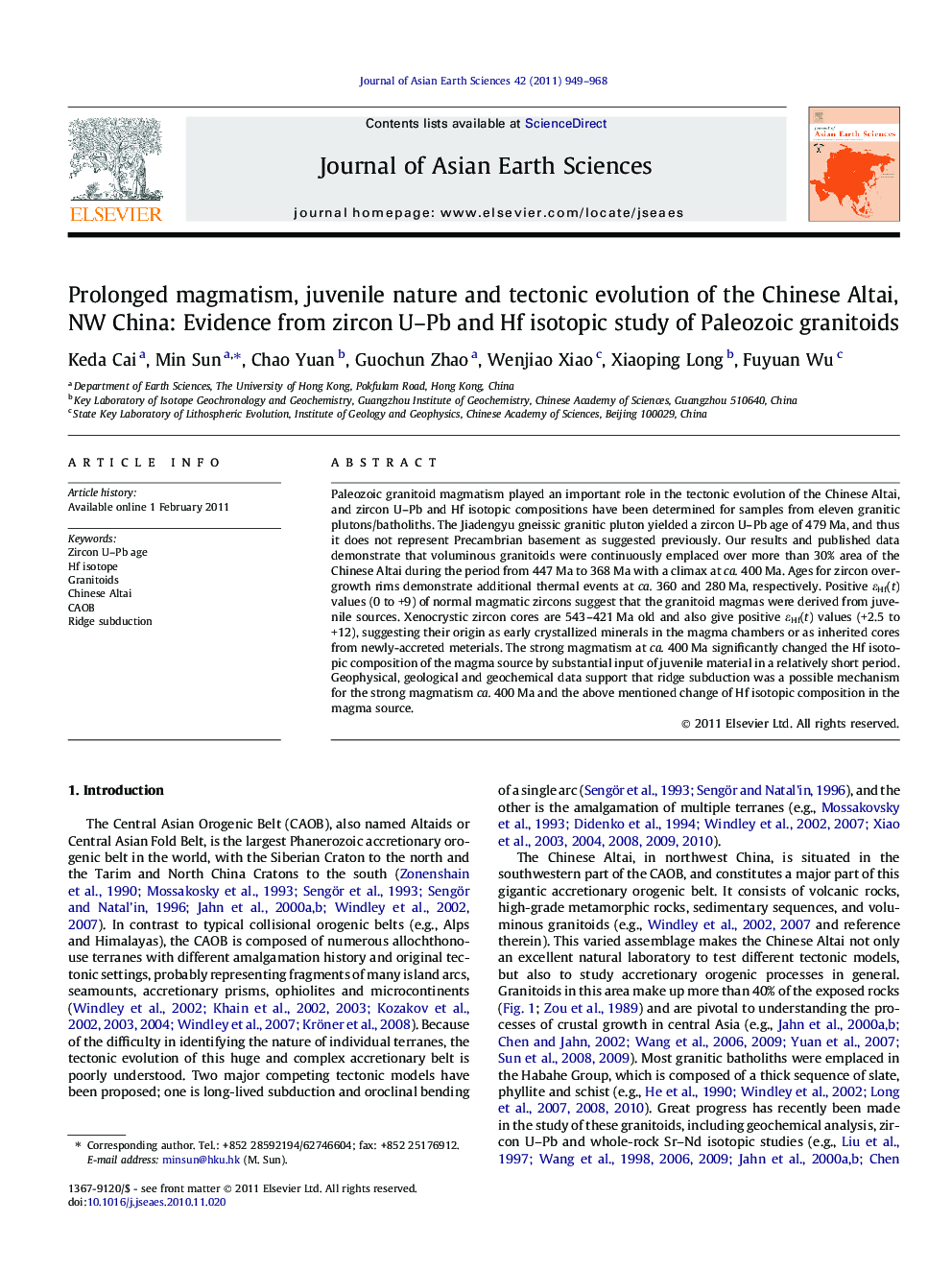| Article ID | Journal | Published Year | Pages | File Type |
|---|---|---|---|---|
| 4731724 | Journal of Asian Earth Sciences | 2011 | 20 Pages |
Paleozoic granitoid magmatism played an important role in the tectonic evolution of the Chinese Altai, and zircon U–Pb and Hf isotopic compositions have been determined for samples from eleven granitic plutons/batholiths. The Jiadengyu gneissic granitic pluton yielded a zircon U–Pb age of 479 Ma, and thus it does not represent Precambrian basement as suggested previously. Our results and published data demonstrate that voluminous granitoids were continuously emplaced over more than 30% area of the Chinese Altai during the period from 447 Ma to 368 Ma with a climax at ca. 400 Ma. Ages for zircon overgrowth rims demonstrate additional thermal events at ca. 360 and 280 Ma, respectively. Positive εHf(t) values (0 to +9) of normal magmatic zircons suggest that the granitoid magmas were derived from juvenile sources. Xenocrystic zircon cores are 543–421 Ma old and also give positive εHf(t) values (+2.5 to +12), suggesting their origin as early crystallized minerals in the magma chambers or as inherited cores from newly-accreted meterials. The strong magmatism at ca. 400 Ma significantly changed the Hf isotopic composition of the magma source by substantial input of juvenile material in a relatively short period. Geophysical, geological and geochemical data support that ridge subduction was a possible mechanism for the strong magmatism ca. 400 Ma and the above mentioned change of Hf isotopic composition in the magma source.
Research highlights► Granitoids in the Chinese Altai are 479–368 Ma old, with an age peak of 400 Ma. ► Positive zircon εHf(t) values are dominant for Granitoids from the Chinese Altai. ► Zircon Hf isotopic compositions present a significant change at ca. 400 Ma. ► Ridge subduction can account for the distinct magmatism and metamorphism.
